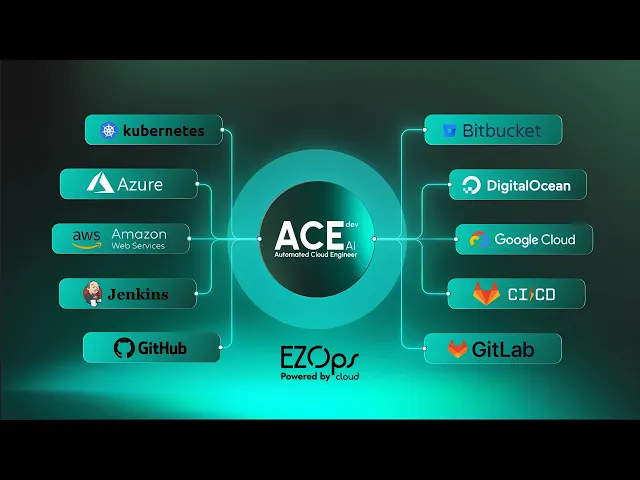
The role of DevOps in ensuring cloud & DevOps security: best practices
Cloud Security, Reliability & Governance
What you’ll find in this article: essential secure DevOps practices to strengthen cloud & DevOps security across modern cloud operations.
Why read it: if you're scaling in the cloud, this guide shows how DevOps improves cloud & DevOps security while supporting faster and safer software delivery.
Why cloud & DevOps security needs DevOps more than ever?
Cloud adoption continues to surge among startups and SMBs, but with that growth comes increased exposure to security vulnerabilities. According to IBM’s 2023 Cost of a Data Breach Report, the average cost of a breach in a hybrid cloud production environment reached $4.75 million. Even more concerning, 83% of organizations experienced more than one breach (IBM, 2023).
For fast-growing businesses, cloud & DevOps security is no longer optional. DevOps has evolved from a productivity framework into a core pillar of secure DevOps practices across the entire software development lifecycle.
In this article, we’ll explore how DevOps, when implemented correctly, becomes a critical security enabler for cloud environments.
1. DevOps + Cloud: a foundation for proactive security
Traditional security models often slow innovation and increase human error by reacting late in the development lifecycle. DevOps addresses this by embedding security directly into workflows, aligning development and operations teams under a shared responsibility model.
How this helps:
Security checks occur early and continuously, reducing risk.
Teams collaborate instead of operating in silos.
Infrastructure is defined as code, improving traceability and auditability.
According to Gartner (2023), organizations that integrate security into DevOps achieve faster incident response and significantly fewer vulnerabilities in their DevOps environment.
If you’re a CEO, this means your DevOps team isn't just moving fast - they're moving smart.

2. CI/CD pipelines: automating secure deployments
CI/CD pipelines are a cornerstone of secure DevOps practices. Beyond accelerating releases, they enable early detection of security vulnerabilities in the software development process.
Best practices include:
Static code analysis tools like SonarQube or Snyk to detect vulnerabilities before code is merged.
Secrets management tools (e.g., AWS Secrets Manager) to avoid hardcoded credentials.
Automated testing for security controls, regressions, and misconfigurations.
GitLab’s 2023 DevSecOps Survey found that teams using secure CI/CD pipelines experience fewer security incidents, reinforcing the role of automation in cloud & DevOps security.
That’s one of the reasons EZOps Cloud integrates secure CI/CD flows into every project, ensuring every deployment is a secure one.
3. Infrastructure as Code (IaC): security through consistency
Manual provisioning introduces inconsistency and human error. Infrastructure as Code enforces repeatability and strengthens secure DevOps practices.
Key practices:
Use tools like Terraform or other open source IaC frameworks.
Store infrastructure definitions in version control.
Scan infrastructure code for misconfigurations.
Palo Alto Networks (2023) reports that IaC significantly reduces configuration drift, a leading cause of vulnerabilities in cloud-based DevOps environments.

4. Role-based access control (RBAC) and least privilege
A solid identity strategy is your first line of defense. Yet, 45% of cloud breaches stem from misconfigured access permissions (Verizon DBIR, 2023).
Best practices:
Implement RBAC in your cloud platform (IAM policies in AWS, Azure RBAC).
Grant least privilege by default and review access regularly.
Use identity federation (e.g., SSO with Okta) to manage team access at scale.
Your DevOps pipeline should enforce access controls, not bypass them.
5. Observability, logging, and incident response
Visibility is essential for secure DevOps practices. Continuous monitoring allows teams to detect threats early and respond before systems are compromised.
What to implement:
Centralized logging with tools like ELK, Datadog, or AWS CloudWatch.
Monitoring and alerting for unusual behavior (CPU spikes, access anomalies).
Predefined incident response playbooks integrated into pipelines.
IBM reports that companies with strong incident response plans reduce the cost of a breach by an average of $1.49M.
6. Container security and kubernetes best practices
With the rise of containers and orchestration tools like Kubernetes, new security concerns have emerged.
What we recommend:
Use image scanning tools (e.g., Trivy, Clair) in CI/CD.
Implement pod security policies and network segmentation.
Rotate secrets and restrict container privileges.
EZOps Cloud supports secure Kubernetes implementations across AWS, Azure, and GCP.
7. Automating compliance and audit readiness
DevOps isn’t just about agility - it also simplifies compliance. With the right automation, you can stay aligned with standards like SOC 2, ISO 27001, or HIPAA.
Automation ideas:
Infrastructure audits with policy-as-code tools like Open Policy Agent (OPA).
Generate evidence with automated change logs and traceable deployments.
Use security baselines aligned with frameworks like CIS Benchmarks.
This approach strengthens cloud & DevOps security while reducing operational overhead.
Final thoughts: DevOps and security go hand in hand
Security doesn’t need to slow innovation. When DevOps is implemented with secure DevOps practices, it becomes a force multiplier.
For organizations operating in the cloud, DevOps is not optional. It is the foundation of resilient, secure, and scalable cloud operations.


EZOps Cloud delivers secure and efficient Cloud and DevOps solutions worldwide, backed by a proven track record and a team of real experts dedicated to your growth, making us a top choice in the field.
EZOps Cloud: Cloud and DevOps merging expertise and innovation



